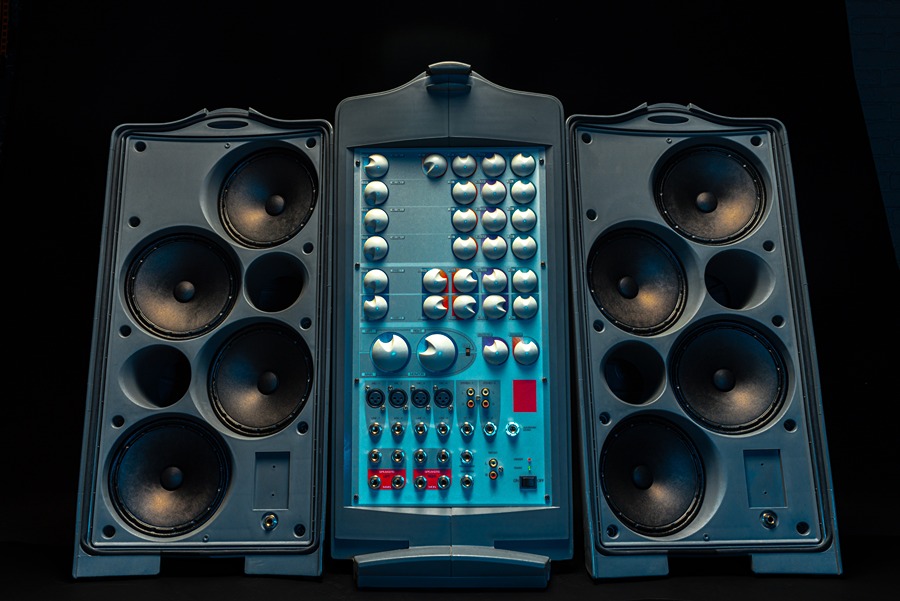
When the topic is whether picking 4 ohms or 8 ohms, you have to know that is about the speaker impedance which is pretty much the same as resistance. Audio technology pieces offer different impedance levels (4, 6, 8, and 16) and is blending with the speaker impedance to the amplifier, setting the seal on your sound system to run effectively.
A 4-ohm speaker needs more strength from an added amplifier power than an 8-ohm speaker in order to produce the same loudness. This happens because of the correlation between voltage and resistance in the electronic circular that flows through.
Power is joining or merging the voltage and the current, so they ensure further current to the loudspeaker, an amplifier requires a higher power rate.
General Information Regarding Impedance
Impedance limits the flow of electrical energy in a circuit similar to resistance. While impedance varies for different audio frequencies whereas resistance is typically constant, the results are very similar.
The voice coil of the loudspeaker as well as other electronic parts help to shape impedance. The impedance value of a speaker is an average over a large range of hearing frequencies.
Something very important to know is impedance matching.
A mismatch between speaker and amplifier impedances can harm the amplifier’s circuitry and cause distortion and poor sound quality.
As the power demands on the amplifier are highest at high loudness levels, this issue is most crucial when you listen to loud music.
Comparing: 4 ohm vs. 8 ohm?

A 4-ohm speaker needs more power from an amplifier. Is it better though? Yes because it is considered a starving component for power.
Yes, it’s better because most of the time it depends on the speaker’s impedance to run 4 ohms accurately. Mostly, 4 ohms is chosen by cutting-edge speakers and the brands sell those speakers at high-end prices. A 4-ohm produces an exceptional sound boost, it is way more natural and has no sound distortion at high pitches and volumes.
Moreover, 4-ohm isn’t always better because the home audio system on every occasion cannot resist impedance issues. However, impedance itself is not the one that determines the speaker’s power, but you should also look for sensitivity.
On the other side, there is an 8-ohm impedance that accepts less power from the amplifier. An 8-ohm is the result of high resistance and the more resistant the impedance is, the less power production is received. High impedance is more detailed and is preferred more by professionals.
So, in most cases, a 4 ohms impedance can be counted as a winner.
Does Impedance Affect the Sound Quality?
Impedance alone itself does NOT determine the sound quality. There are other specifications that you need to look for, but most importantly what is your purpose for buying.
You know your own taste when it comes to music. At times 4-ohm is better for lower power impedance and 8-ohm is better for a higher power. That really depends on personal preference. You have to know that high power impedance doesn’t necessarily mean better sound quality, however, an 8-ohm impedance operates with higher power output (wattage).
If you’re a casual listener and not an audiophile freak, then go for 4 ohms. For more professional use, go for 8 ohms.
Matching the Impedance with an Amplifier is Important

The not-so-pleasing fact with impedance headphones is being so low even though the volume is at maximum level. So, it obligates you to get an extra amplifier that matches the impedance. In case you avoid the amplifier, the sound-producing device can get damaged due to not having enough power.
If a chosen amplifier is mismatched, you will perfectly notice the poorness of the sound production as well as visible distortion. This isn’t a very pleasant experience.
Not picking the required amplifier, the device won’t be able to reach that peak sound quality because the power will be lost during the transmission.
All speakers have an impedance rating. The impedance rate in this case with 4 ohms and 8 ohms highly affects either the signal output or volume level.
If the impedance is lower at 4 ohms for the amplifier, it will not be up to scratch at high volumes.
If the impedance is 8 ohms which are higher, the amplifier can cut shorter the notes due to the inadequate voltage coming from the amplifier.
What about the Series and Parallel Connection?
Well, that’s another issue you can come across. Even though you have picked the right amplifier for your speaker does not necessarily mean you are done, you also have to connect them correctly. There are two methods to connect many speakers on the same circuit. One is in parallel and the other one is in series.
Parallel connection is when the electrode is connected to the positive terminal or let’s say battery, this process is called the anode. Now, running the wire from one speaker’s positive terminal to the following speaker’s positive terminal, and the other way round is how you link them in parallel.
After you do that, the speakers reduce the impedance by half, resulting in two 4-ohm speakers providing an impedance of only 2 ohms.
Running speaker wire from the positive terminal of one speaker to the negative terminal of the next, and so forth, is how you connect them in series. Two 4-ohm speakers add up to 8 ohms or two 2-ohm speakers add up to 4 ohms when wired in this way.
A Brief Summary
Impedance is measured with ohms and is written as a Greek sign Ω. Impedance determines the level of resistance of your speakers. An 8Ω and 4Ω is the most occurring impedance power.
A 4-ohm lower impedance is mostly preferred for lower power and an 8-ohm impedance is usually used for a higher power. Adding an amplifier is required and there are 2 ways to connect multiple speakers which are in parallel and in series.
Just letting you know impedance itself does not determine the quality of the sound production.
If you are a casual music listener, lower impedance like 4-ohms would be a better choice and vice versa, if your intention is for professional use or you just simply are an audiophile person, a better choice would be 8-ohms.
However, be careful while picking an amplifier because in case you choose the wrong one, over time, it can damage the speaker or headphones.
Further Reading
From speakers, I would like to move on to something else and introduce to you guys some other articles that I’ve already written.
There are some great 50mm driver headphones that you can look for, and if you have no idea what that is, you can check out the battle between 40mm and 50mm drivers.
Or, if your concern is more related to the connectivity part, find out more about the comparison between 3.5 and 2.5 mm jack.
Alternatively, you can check out the article DAC Vs. Amp and find out what is the main difference.
Additionally, you can check out our High Impedance Headphones as well as Low Impedance Headphones. It’s up to you to decide according to your needs and style.
Composer & Audio Engineer
I’m a composer and audio engineer crafting sonic magic. Combining my skills in rhythm, harmony, and sound synthesis to create the ultimate auditory experience.





